Year 6
The science inquiry skills and science as a human endeavour strands are described across a two-year band. In their planning, schools and teachers refer to the expectations outlined in the achievement standard and also to the content of the science understanding strand for the relevant year level to ensure that these two strands are addressed over the two-year period. The three strands of the curriculum are interrelated and their content is taught in an integrated way. The order and detail in which the content descriptions are organised into teaching and learning programs are decisions to be made by the teacher.
Incorporating the key ideas of science
Over Years 3 to 6, students develop their understanding of a range of systems operating at different time and geographic scales.
In Year 6, students explore how changes can be classified in different ways. They learn about transfer and transformations of electricity, and continue to develop an understanding of energy flows through systems. They link their experiences of electric circuits as a system at one scale to generation of electricity from a variety of sources at another scale and begin to see links between these systems. They develop a view of Earth as a dynamic system, in which changes in one aspect of the system impact on other aspects; similarly, they see that the growth and survival of living things are dependent on matter and energy flows within a larger system. Students begin to see the role of variables in measuring changes and the value of accuracy in these measurements. They learn how to look for patterns and to use these to identify and explain relationships by drawing on evidence.
(source: www.australiancurriculum.edu.au)
Achievement Standard
By the end of Year 6, students compare and classify different types of observable changes to materials. They analyse requirements for the transfer of electricity and describe how energy can be transformed from one form to another when generating electricity. They explain how natural events cause rapid change to Earth’s surface. They describe and predict the effect of environmental changes on individual living things. Students explain how scientific knowledge helps us to solve problems and inform decisions and identify historical and cultural contributions.
Students follow procedures to develop investigable questions and design investigations into simple cause-and-effect relationships. They identify variables to be changed and measured and describe potential safety risks when planning methods. They collect, organise and interpret their data, identifying where improvements to their methods or research could improve the data. They describe and analyse relationships in data using appropriate representations and construct multimodal texts to communicate ideas, methods and findings.
(source: www.australiancurriculum.edu.au)
- Plus Plan
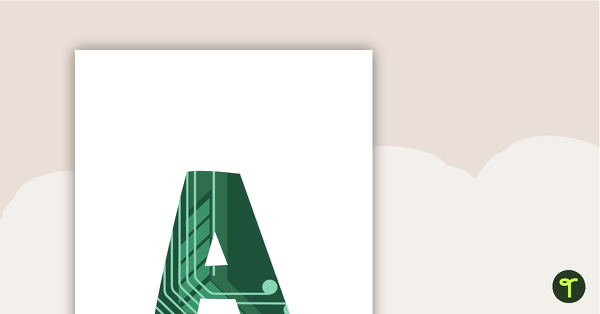
Electric Circuit - Letter, Number And Punctuation Sets
Circuit themed letters that can be customised for personalised signs in your classroom.
- Free Plan
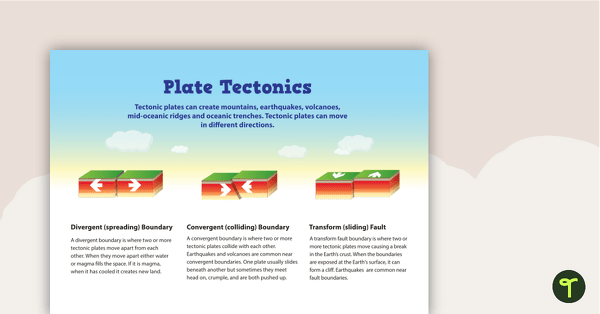
Plate Tectonics Poster
A poster explaining the main types of plate boundaries and their effects on the earth's surface.
- Plus Plan
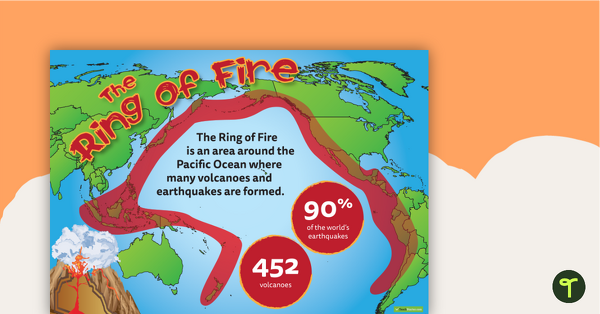
The Ring of Fire Resource Pack
A resource pack about the Ring of Fire, including colourful, informative posters and a worksheet.
- Plus Plan
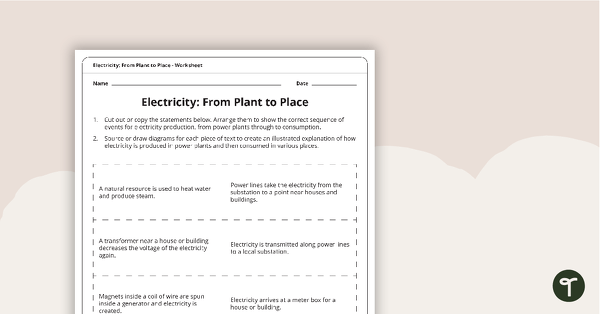
Electricity: From Plant to Place - Worksheet
A worksheet that explores how electricity is generated and distributed.
- Free Plan
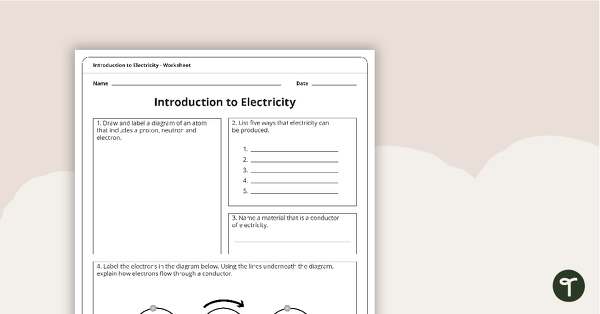
Introduction to Electricity Worksheet
A worksheet that explores the concept of electricity.
- Plus Plan
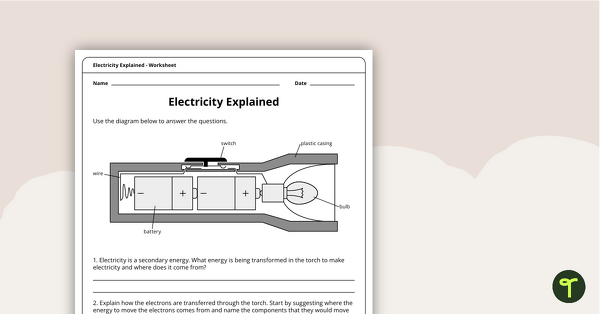
Electricity Explained Worksheet
A worksheet that explores the concept of electricity.
- Plus Plan
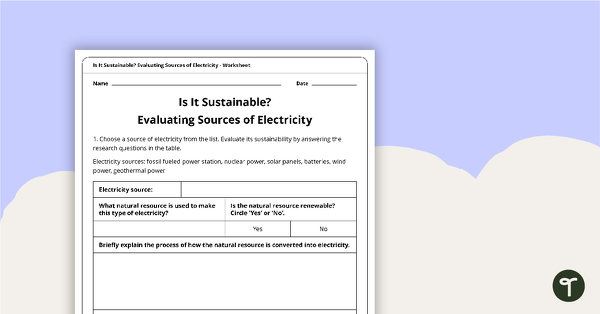
Is It Sustainable? Evaluating Sources of Electricity Worksheet
A worksheet for considering whether an energy source is sustainable.
- Plus Plan
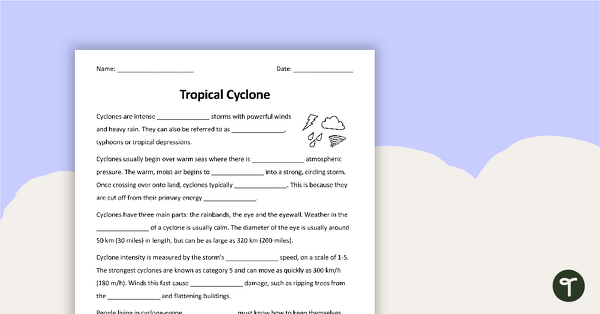
Tropical Cyclone Cloze Worksheet
A cloze worksheet about tropical cyclones.
- Plus Plan
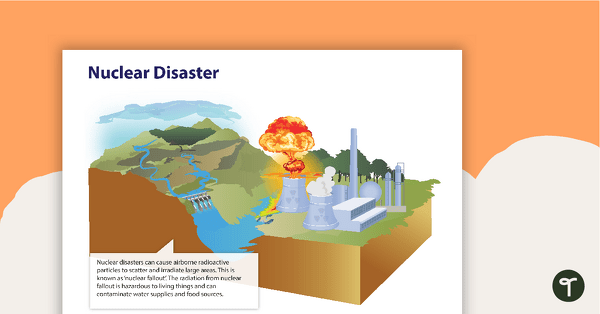
Man-made Disasters Posters with Information
A set of four man-made disaster posters with information.
- Plus Plan

Natural Disasters Safety Poster
A task to be used when investigating how to remain safe in the event of a natural disaster.
- Plus Plan
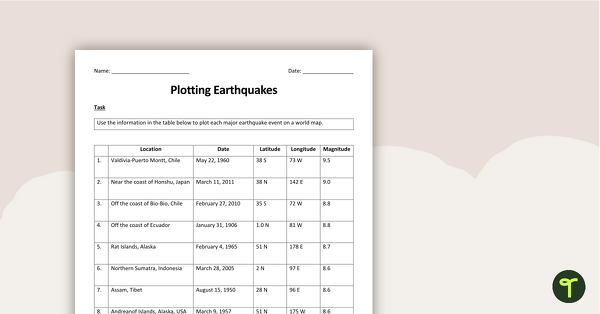
Plotting Earthquakes Worksheet & Map Activity
Teach longitude and latitude with a printable earthquakes plotting worksheet and map activity.
- Plus Plan
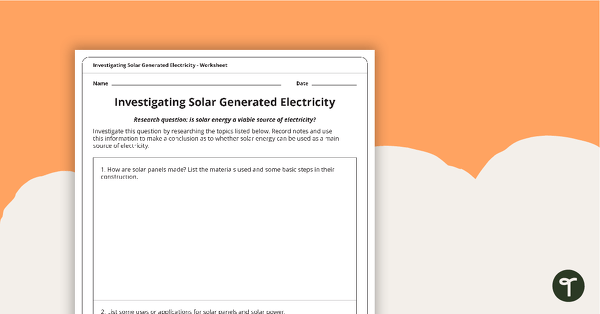
Investigating Solar Electricity - Worksheet
A worksheet that helps students discern if solar power is a viable source of electricity.
- Free Plan
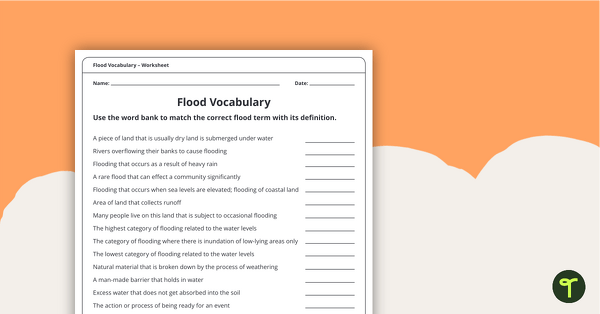
Flood Vocabulary Task
A vocabulary task for students to use when demonstrating their understanding of the impact of floods in Australia.
- Plus Plan
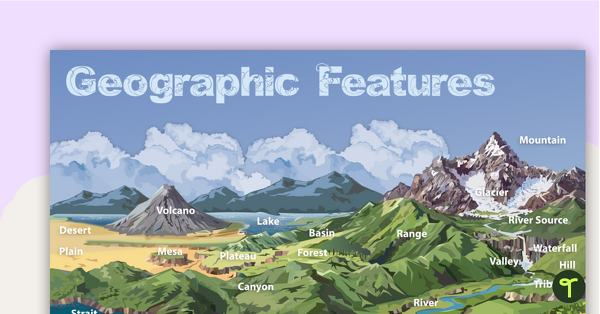
Geographic Landforms Features Poster and Worksheet
Add this poster of different types of geographic features of Earth to your classroom walls to provide a visual reference for students.
- Plus Plan
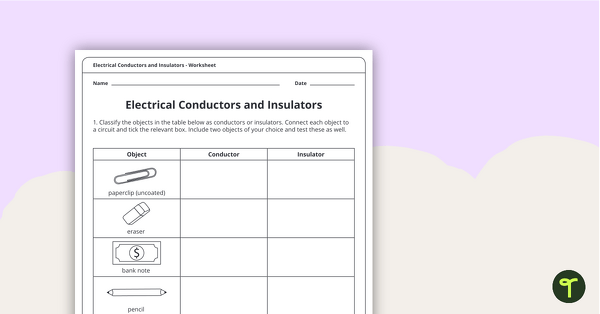
Electrical Conductors and Insulators Worksheet
A worksheet that explores conductors and insulators.
- Plus Plan
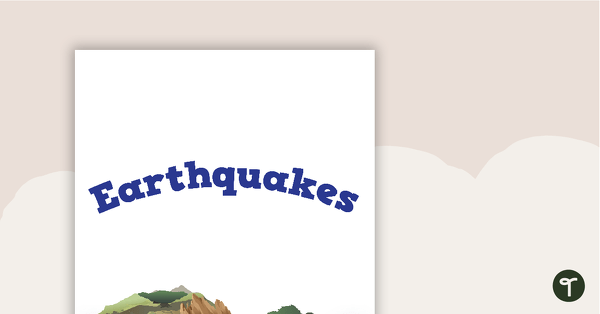
Earthquakes - Title Poster
A poster to use on your Earthquakes display board.
- Plus Plan
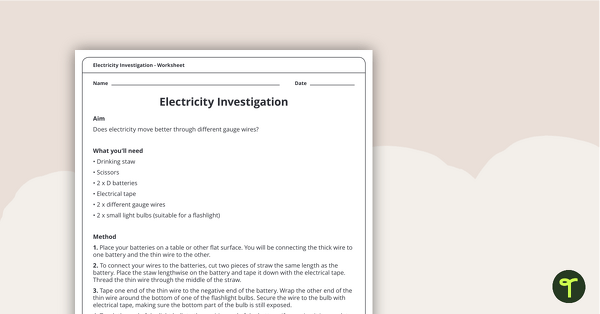
Electricity Investigation - Worksheet
An investigation of whether electricity moves better through different wire gauges.
- Plus Plan
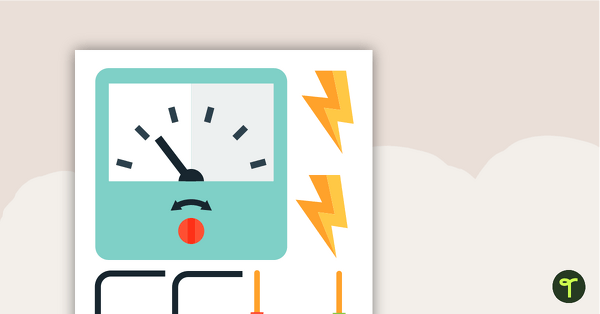
Electricity Decorations
4 pages of electricity decorations to theme your classroom.
- Plus Plan
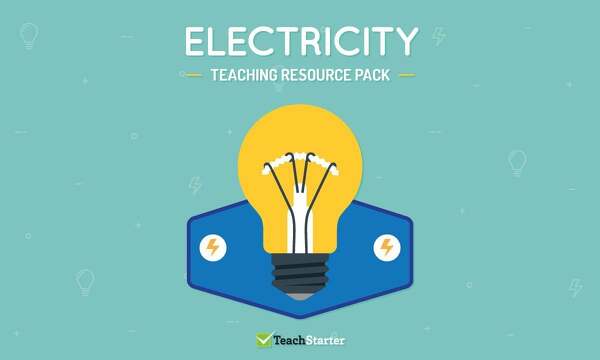
Electricity Teaching Resource Pack
A collection of electricity posters, worksheets and activities.
- Plus Plan
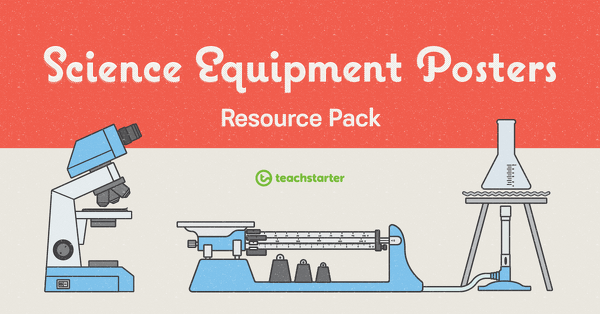
Science Equipment Poster Bundle for the Classroom
A poster resource pack containing a diagrams with labels showing the key parts of various pieces of scientific apparatus.
- Plus Plan
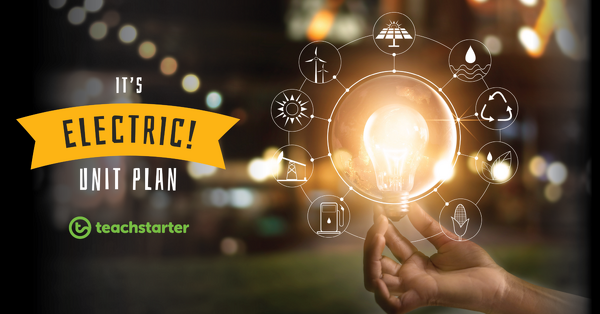
It's Electric! Unit Plan
This Physical Sciences unit addresses the principles of electricity. It explores what electricity is, how it is transferred and how energy is transformed to create it.
- Plus Plan
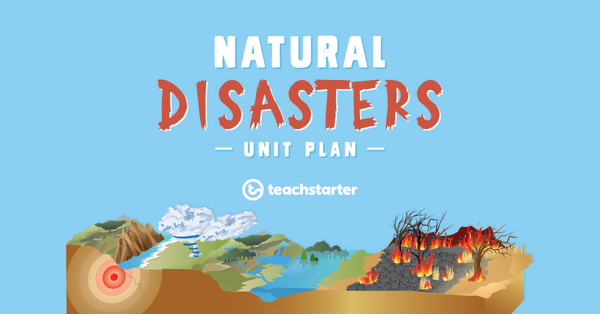
Natural Disasters Unit Plan
This Science unit addresses the concepts of plate tectonics and natural disasters.
- Plus Plan
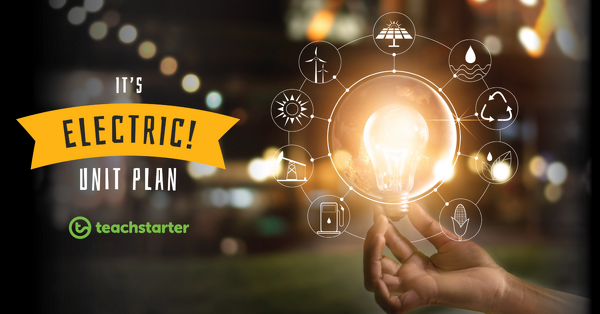
Electricity Explained
An assessment task in which students will demonstrate an understanding of energy transfer and transformation when generating electricity.
- Plus Plan
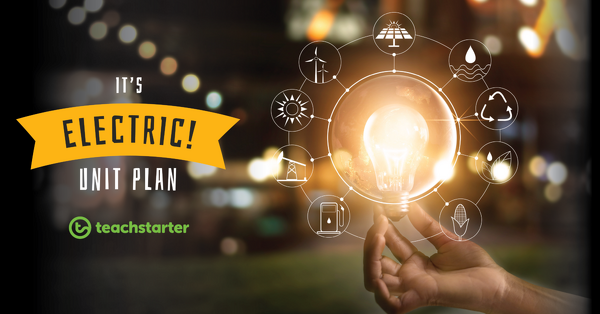
Is It Sustainable? Evaluating Sources of Electricity
A 60 minute lesson in which students will consider whether energy sources are sustainable.
- Plus Plan
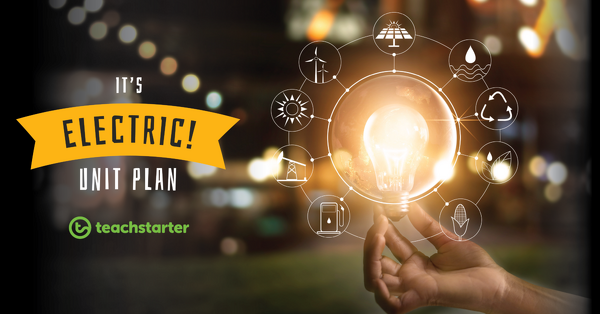
Solar Electricity
A 60 minute lesson in which students will investigate the use of solar panels and determine if they are a viable source of electricity.
- Plus Plan

Natural Disasters Inquiry Task - Presenting
- Plus Plan

Transforming Energy Into Electricity
A 60 minute lesson in which students will investigate how moving air and water can turn turbines to generate electricity.
- Plus Plan
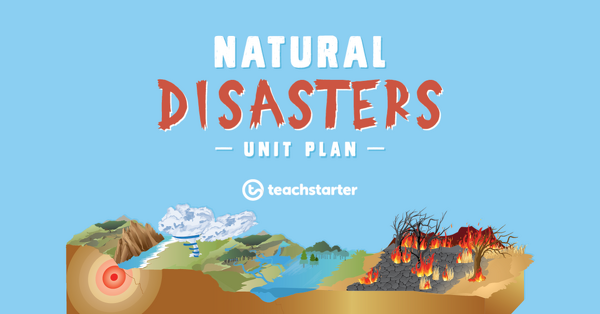
Natural Disasters Inquiry Task - Researching
- Plus Plan
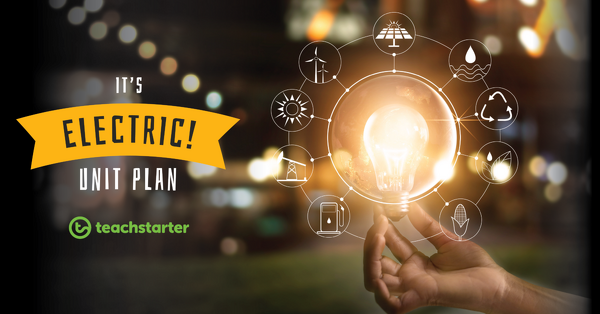
Shine Bright, Electric Light!
A 60 minute lesson in which students will investigate how changes to electrical circuits affect their components.
- Plus Plan
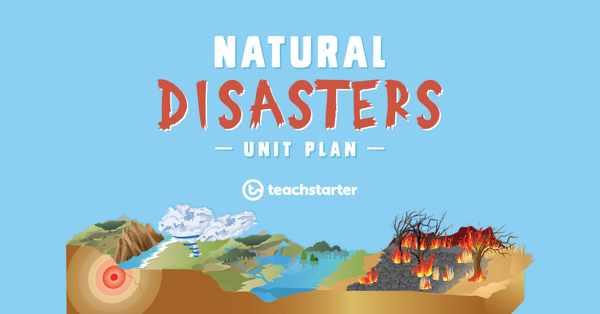
Natural Disasters Inquiry Task - Introduction
- Plus Plan

Feeling the Flow - Electrical Conductors and Insulators
A 60 minute lesson in which students will classify objects as conductors or insulators of electricity.
- Plus Plan
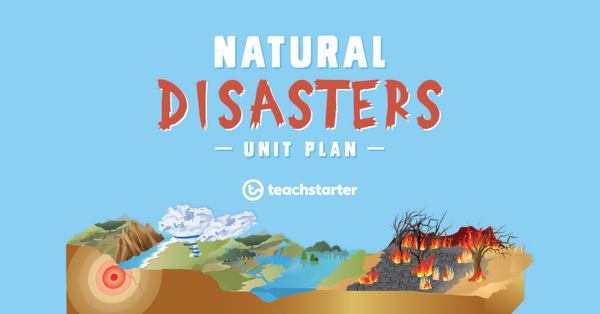
Natural Disasters Safety Poster Task
A 60 minute lesson in which students will identify appropriate safety procedures for natural disaster events.